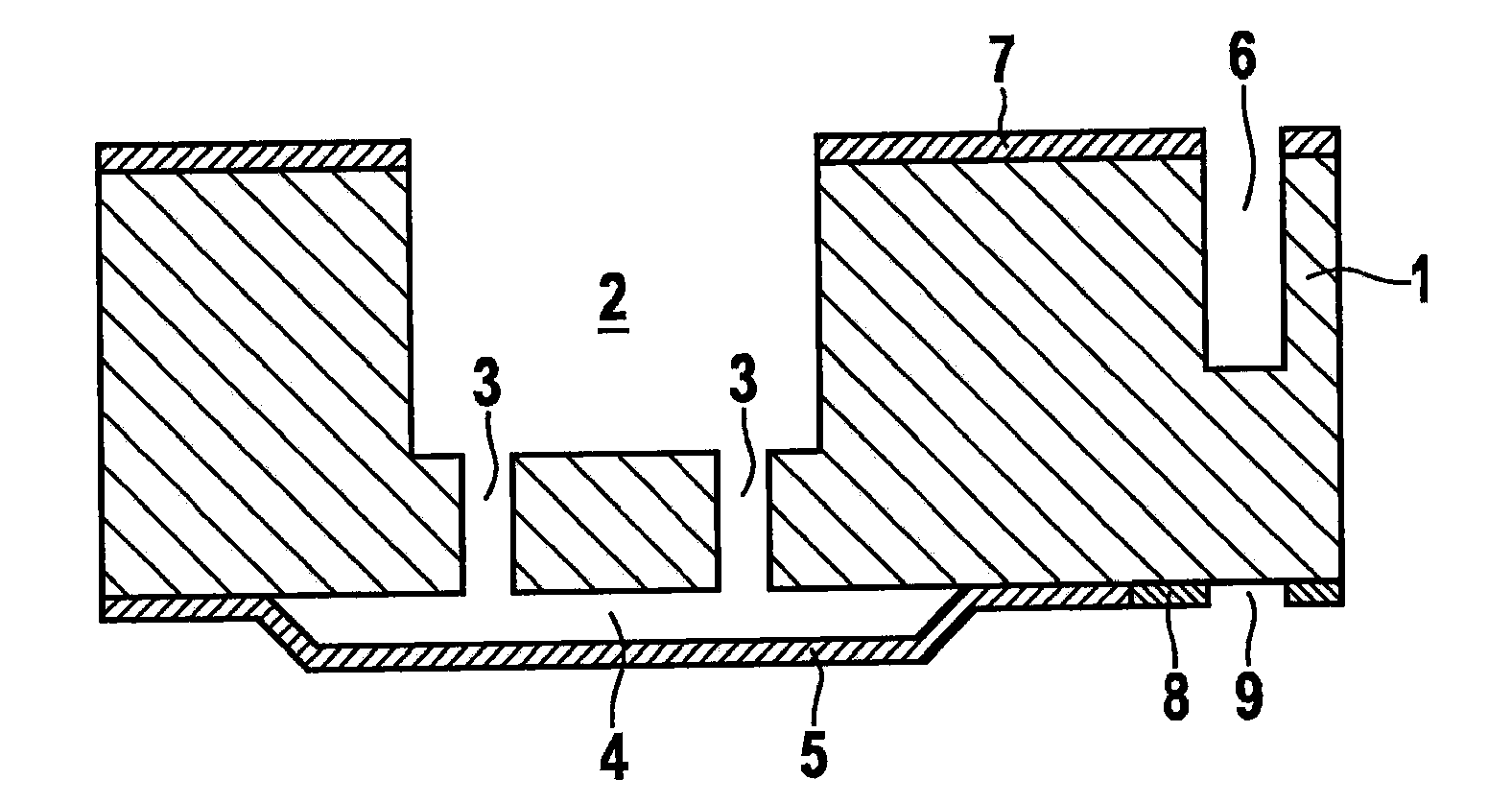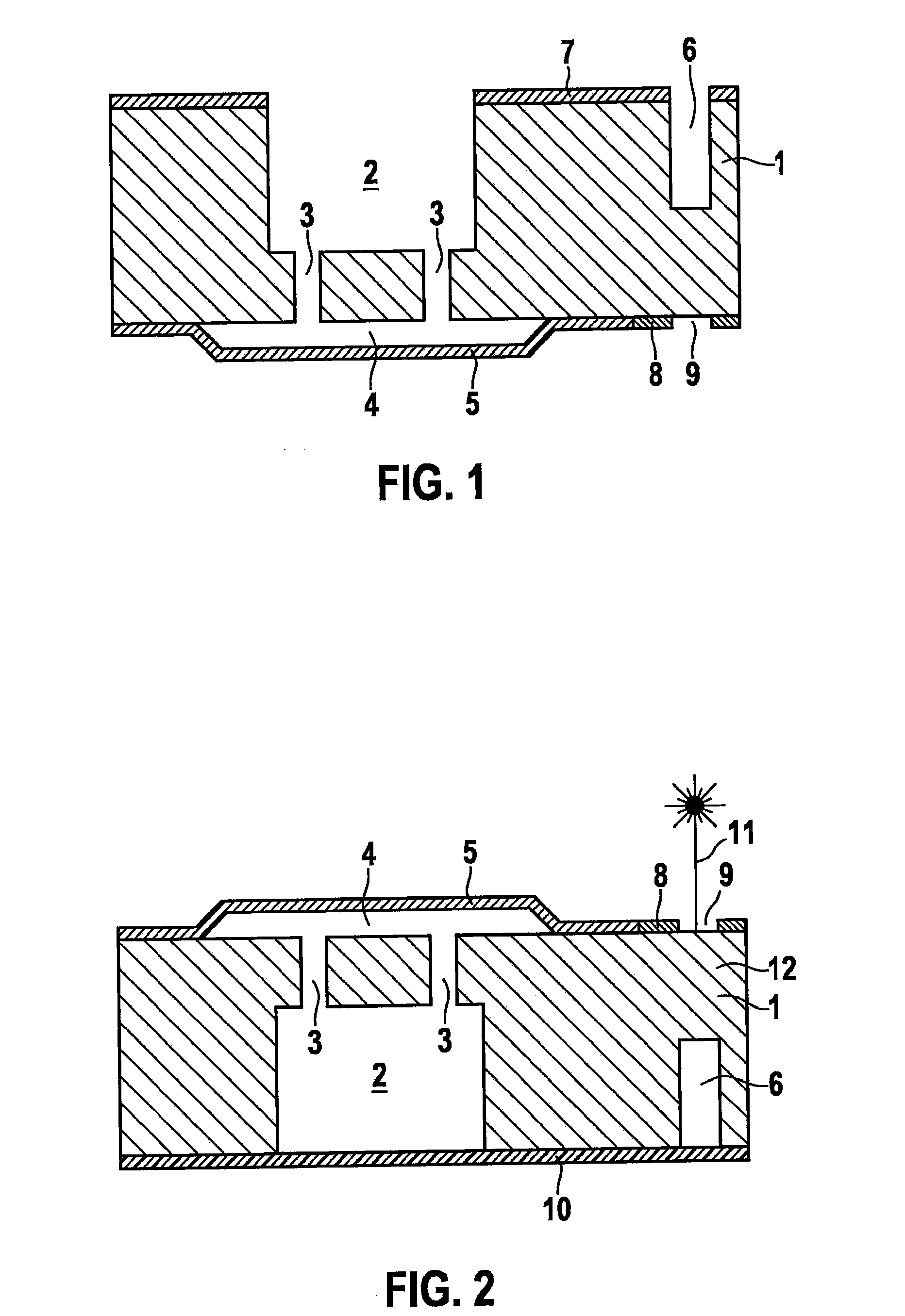Method for manufacturing separated micromechanical components situated on a silicon substrate and components manufactured therefrom
a micromechanical and silicon substrate technology, applied in the direction of fluid pressure measurement, semiconductor electrostatic transducers, instruments, etc., can solve the problems of complex sawing using liquid media, high risk of components, and multiple or even multiple laser scans, so as to reduce processing time and processing costs, reduce the cutting depth of the laser process, and reduce the effect of amorphization
- Summary
- Abstract
- Description
- Claims
- Application Information
AI Technical Summary
Benefits of technology
Problems solved by technology
Method used
Image
Examples
Embodiment Construction
[0035]FIG. 1 shows a structured silicon wafer after the anisotropic plasma deep etching step. Silicon substrate 1 has been etched in such a way that cavity 2, perforation holes 3 through substrate 1, and hollow space 4 between substrate 1 and diaphragm 5 have been constructed. Furthermore, separation trenches 6 were applied at the same time as the etching of cavity 2. Cavity 2 and separation trenches 6 may fundamentally be produced having vertical side walls by the anisotropic etching process. Separation trench 6 is produced having a lesser etching depth than cavity 2 by utilizing the RIE lag effect. Residues of a masking layer 7 are still located on the side of substrate 1 facing away from the diaphragm. The surface of substrate 1 on the diaphragm side is partially covered by a further masking layer 8 at the points at which no diaphragm 4 is located. This masking layer 8 is interrupted by an unmasked area 9, however. Unmasked area 9 is in the extension of separation trench 6 and fi...
PUM
 Login to View More
Login to View More Abstract
Description
Claims
Application Information
 Login to View More
Login to View More - R&D
- Intellectual Property
- Life Sciences
- Materials
- Tech Scout
- Unparalleled Data Quality
- Higher Quality Content
- 60% Fewer Hallucinations
Browse by: Latest US Patents, China's latest patents, Technical Efficacy Thesaurus, Application Domain, Technology Topic, Popular Technical Reports.
© 2025 PatSnap. All rights reserved.Legal|Privacy policy|Modern Slavery Act Transparency Statement|Sitemap|About US| Contact US: help@patsnap.com


